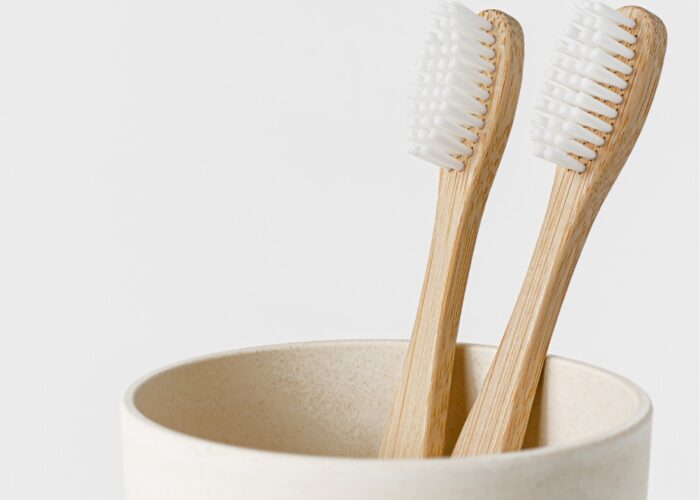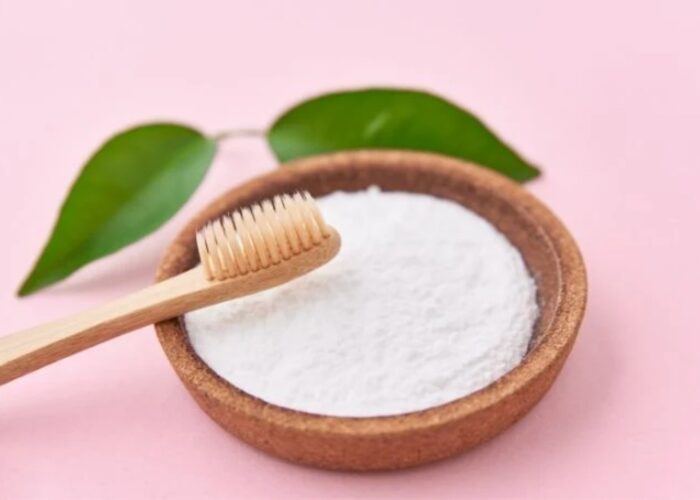In today’s world, as the environment faces severe challenges, choosing eco-friendly products is more important than ever. A bamboo toothbrush is an excellent choice for those looking to reduce plastic waste. However, not everyone knows how to properly care for and clean a bamboo toothbrush. This article will guide you on how to clean a bamboo toothbrush, helping to extend the product’s lifespan and ensure effective personal hygiene. Let’s explore how to clean a bamboo toothbrush to protect your health and that of your family, while also contributing to the preservation of a green and clean environment.
Contents [hide]
1. How to clean bamboo toothbrush?
Maintaining a bamboo toothbrush is essential for ensuring hygiene and prolonging its lifespan. Here’s a step-by-step guide on how to clean and care for your bamboo toothbrush:
- Rinse After Use: After each use, rinse the bristles of your bamboo toothbrush thoroughly with warm water. This helps remove food particles and reduces the buildup of bacteria.
- Use Mild Soap: For a deeper clean, periodically wash the bristles with a small amount of mild soap and warm water. Gently lather and scrub the bristles to remove any residue. Avoid using harsh chemicals or abrasive cleaners, as they can damage the bamboo and bristles.

- Sanitize the Bristles: To further sanitize the bristles, you can soak the toothbrush head in a solution of equal parts water and white vinegar for about 10-15 minutes. This helps eliminate bacteria and odors. Rinse the toothbrush thoroughly with water after soaking.
- Dry Completely: After cleaning, shake off excess water and allow the toothbrush to air dry completely. Place it in a well-ventilated area where it can dry upright. Avoid placing it in a closed container or humid environment, as this can promote mold and bacteria growth.
- Replace Regularly: Even with proper cleaning, bamboo toothbrushes should be replaced every 3-4 months or sooner if the bristles become frayed. Regular replacement ensures effective cleaning and minimizes bacterial buildup.
- Store Properly: Store your bamboo toothbrush in a dry place. Avoid leaving it in a damp or enclosed environment, as this can lead to mold growth. A toothbrush holder with ventilation slots is ideal for keeping your toothbrush dry and clean.
By following these steps, you can maintain your bamboo toothbrush in optimal condition, ensuring effective oral hygiene while contributing to environmental sustainability.
2. How to disinfect bamboo toothbrush?
Proper disinfection of a bamboo toothbrush is crucial for maintaining oral hygiene and extending the life of the toothbrush. Here’s a detailed guide on how to effectively disinfect your bamboo toothbrush:
- Rinse Thoroughly: Begin by rinsing the bristles of your bamboo toothbrush under warm running water to remove any food particles and debris. This initial rinse helps ensure that the disinfectant can penetrate the bristles more effectively.
- Soak in a Vinegar Solution: To disinfect the toothbrush, soak the bristles in a mixture of equal parts white vinegar and water. Allow the toothbrush to sit in this solution for about 10-15 minutes. Vinegar has natural antibacterial properties that help eliminate bacteria and odors.
- Use Baking Soda Paste: For an extra layer of disinfection, you can create a paste using baking soda and water. Apply the paste to the bristles and let it sit for a few minutes before rinsing thoroughly. Baking soda is a mild abrasive and has natural antibacterial properties that help clean and deodorize the toothbrush.

- Boil Water Method: Another effective method for disinfecting your bamboo toothbrush is to briefly boil the bristles in water. Place the toothbrush in a pot of boiling water for about 3-5 minutes. This method can kill bacteria and other pathogens. Ensure the bristles are completely dry before using the toothbrush again.
- Dry Completely: After disinfection, rinse the toothbrush thoroughly with clean water to remove any residue from the disinfectants. Shake off excess water and allow the toothbrush to air dry completely in a well-ventilated area. This prevents the growth of mold and bacteria.
- Replace Regularly: Despite regular disinfection, bamboo toothbrushes should be replaced every 3-4 months or sooner if the bristles become worn or frayed. Regular replacement is important for maintaining effective oral hygiene and minimizing bacterial buildup.
- Store Properly: Store your disinfected bamboo toothbrush in a dry, clean place. Avoid storing it in a closed container or damp environment to prevent mold growth. A toothbrush holder with ventilation slots is ideal for keeping the toothbrush dry and clean.
By following these steps, you can effectively disinfect your bamboo toothbrush, ensuring it remains hygienic and safe for use while contributing to a sustainable lifestyle.
2. Preventing mold on bamboo toothbrushes
To prevent mold on bamboo toothbrushes, ensure you rinse and shake off excess water after each use, then let the toothbrush air dry completely in a well-ventilated area. Store the toothbrush in a dry, open space and avoid closed or humid environments. Additionally, regularly disinfect the toothbrush with a vinegar solution or baking soda paste to kill any mold spores. By keeping your toothbrush dry and clean, you can effectively prevent mold growth.
3. FAQs
3.1 How to remove bristles from a bamboo toothbrush?
To remove bristles from a bamboo toothbrush, gently pull them out using pliers or cut them close to the base with scissors. Once cut, you can easily pull out the remaining bristles by hand. Be cautious not to damage the bamboo handle during the process. Dispose of the bristles responsibly, as they are typically made from synthetic materials.
3.1 How often should I clean my bamboo toothbrush?
You should clean your bamboo toothbrush after each use to maintain hygiene. Additionally, perform a deeper clean by disinfecting it with a vinegar solution or baking soda paste periodically, such as every 1-2 weeks, to ensure it remains sanitary.
3.2 How often should you change bamboo toothbrushes?
You should change your bamboo toothbrush every 3-4 months, or sooner if the bristles become frayed or worn. Regular replacement ensures effective cleaning and maintains good oral hygiene.
3.3 Is it safe to soak my bamboo toothbrush in hot water?
Soaking your bamboo toothbrush in hot water is generally not recommended, as it can weaken the bamboo and potentially cause it to warp or crack. Instead, clean the toothbrush with warm water and mild soap, and avoid prolonged exposure to hot temperatures.
If you have any further questions, don’t hesitate to send thanhcongcraft an email us at info@thanhcongcraft.com or message us at WhatsApp: +84967485411. Hope to serve you soon! Best regard!


